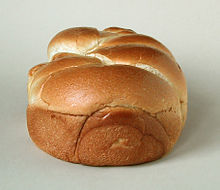
On July 23, here, I referenced three books about religious matters.
I knew nothing more about them than what I got from a book catalog, and a bit of surmise. But one of them in particular intrigued me and in the meantime I have purchased the book.
Here's what I wrote at the time.
Thomas de Wesselow, THE SIGN: The Shroud of Turin and the Secret of the Resurrection
Dutton 2013.
De Wesselow, an art historian by trade, contends that the famous shroud is not a work of art or a fraud but an authentic burial cloth from first century Palestine. Also, he contends that the shroud was central to the origins of Christianity.
He seems not to believe in the orthodox Christian account of events -- he is skeptical that the tomb was found empty or that Jesus later appeared to his disciples and ascended into heaven, etc. But he does believe that the early Christians believed in the resurrection with sufficient ardor to be martyred for it. So ... what convinced them? A mysterious piece of cloth.
----------------------
I can now say after acquiring the book that I was right in my surmise about what de Wesselow is saying. He has a naturalistic point of view on life, but he felt that PoV threatened when he came to the realization, [acting within his field of professional credentials in this],that the Shroud of Turin was not a medieval fake, and that it was indeed likely of first-century origin.
"For a skeptical agnostic," he writes of himself, "this was a suffocating thought. The idea that the Shroud might be authentic hinted at something uncanny happening to Jesus' body in the tomb."
Yet the authenticity of the Shroud becomes less suffocating if a naturalistic process might have brought about that image. This would have to be a naturalistic process sufficiently rare in its operation that it would seem uncanny and miraculous, and lead to the willing martyrdom of those who first witnessed it, convincing them that the Resurrection was not a matter of faith but a simply matter of observed fact, yet a naturalistic process nonetheless.
That is where a Maillard reaction comes in. You can read the basics on such a reaction here. It involves amino acids, sugar, usually some mild degree of heat -- and is best known for producing a browning effect upon foodstuffs.
No such reaction would produce any browning effect upon a pure linen shroud. The hypothesis requires impurities in the shroud, carbohydrates to be precise. Wesselow cites chemists (here he is definitely outside of his personal field of expertise) who confirm that yes, it is possible a dead body could have stained the shroud via a Malliard reaction.
So, essence, the heat in the cave toasted a detailed image of Jesus into the impure linen. The whole thing makes the Easter turn-about in the convictions and fate of a small cluster of Jews no less astonishing than if one presumes his bodily resurrection and His Father's intervention to bring about a miraculous coloring of the same Shroud.
Comments
Post a Comment